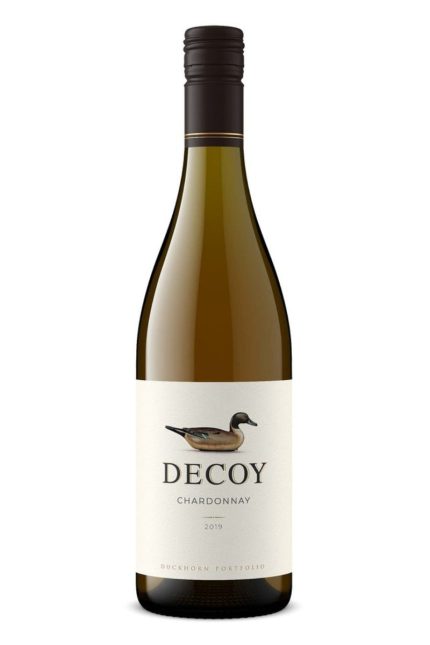Chardonnay is one of the most revered and widely produced white wines in the world, cherished for its versatility and broad appeal. Originating in the Burgundy region of France, this grape has found a home in vineyards across the globe, adapting to various climates and winemaking styles. This article will explore the history, characteristics, production methods, food pairings, and the global significance of Chardonnay.
Historical Roots
chardonnay wine ’s history dates back to the 12th century in Burgundy, where it is believed to be a natural cross between the Pinot Noir and Gouais Blanc grape varieties. This ancient lineage has given rise to some of the finest wines in the world. The name “Chardonnay” is thought to come from the village of Chardonnay in the Saône-et-Loire region of France, although its exact origins remain somewhat murky.
The grape’s popularity began to spread in the 19th century, particularly in California, where it found favorable growing conditions. Today, Chardonnay is cultivated in various wine regions, including Australia, South Africa, South America, and New Zealand, each contributing unique characteristics to the wine.
Characteristics of Chardonnay
One of the most compelling aspects of Chardonnay is its ability to showcase a wide range of flavors and aromas, influenced by factors such as climate, soil, and vinification techniques.
- Flavor Profile: Chardonnay can present a spectrum of flavors. In cooler climates, like Chablis, it typically exhibits bright acidity and flavors of green apple, lemon, and sometimes a flinty minerality. In contrast, warmer regions, such as California, yield wines with riper fruit flavors, including peach, melon, and tropical fruits like pineapple.
- Texture: Chardonnay can vary in texture from crisp and refreshing to rich and creamy. This is often a result of winemaking techniques, particularly the use of malolactic fermentation, which softens the wine’s acidity and adds buttery notes.
- Oaking: Chardonnay can be aged in oak barrels or fermented in stainless steel. Oaked Chardonnays tend to be fuller-bodied and exhibit flavors of vanilla, toast, and spice, while unoaked versions maintain a cleaner, more fruit-forward profile.
- Sparkling Variants: Chardonnay is also a key component in sparkling wines, most notably in Champagne, where it contributes elegance and finesse. Sparkling Chardonnays, often labeled as “Blanc de Blancs,” are characterized by their delicate bubbles and refined flavors.
Production Methods
The production of Chardonnay involves several key steps that influence its final style:
- Harvesting: Grapes are typically harvested at optimal ripeness to balance acidity and sweetness. The timing of the harvest can significantly impact the wine’s flavor profile.
- Crushing and Pressing: After harvesting, the grapes are crushed and pressed to extract the juice. In white wine production, the skins are usually removed quickly to minimize color extraction.
- Fermentation: Chardonnay can be fermented in stainless steel tanks, preserving its fresh fruit characteristics, or in oak barrels, which impart additional flavors. The fermentation process is carefully monitored to maintain the desired temperature and yeast strains.
- Malolactic Fermentation: This optional secondary fermentation is common in Chardonnay production. It converts harsher malic acid into softer lactic acid, resulting in a creamier mouthfeel and buttery flavors.
- Aging: Chardonnay can be aged in oak barrels or stainless steel tanks. Aging in oak can add complexity, while stainless steel aging tends to preserve the wine’s freshness. The aging process can range from a few months to several years, depending on the desired style.
Food Pairings
Chardonnay’s versatility makes it an excellent companion for a variety of dishes. Here are some classic pairings:
- Seafood: Unoaked chardonnay wine pair beautifully with seafood, such as grilled fish, oysters, and shrimp. The wine’s bright acidity enhances the fresh flavors of the ocean.
- Poultry and Pork: Rich, oaked Chardonnays are perfect for roasted chicken or pork, particularly when served with creamy sauces. The wine’s buttery texture complements the richness of these dishes.
- Pasta: Creamy pasta dishes, like fettuccine Alfredo or carbonara, are well-suited for Chardonnay. The wine’s acidity cuts through the richness, balancing the flavors on the palate.
- Cheese: Chardonnay pairs well with a variety of cheeses. Creamy cheeses, such as Brie and Camembert, enhance the wine’s buttery notes, while sharper cheeses, like aged Gouda, contrast nicely with its fruitiness.
Global Influence of Chardonnay
Chardonnay’s appeal has led to the establishment of prominent wine regions worldwide, each producing distinctive expressions of the grape.
- California: The United States is one of the largest producers of Chardonnay, particularly in California. Regions like Napa Valley and Sonoma County are known for their rich, full-bodied Chardonnays that often showcase oak aging.
- Australia: Australian Chardonnays, especially from Margaret River and the Adelaide Hills, have gained international acclaim. These wines typically balance ripe fruit flavors with refreshing acidity, offering a different perspective on the varietal.
- South Africa: South African producers are increasingly gaining recognition for their Chardonnays, which often blend the freshness of cooler climates with the richness of warmer regions, creating complex and elegant wines.
- Champagne: In the Champagne region of France, Chardonnay is one of the three main grape varieties used in sparkling wine production. The best examples are characterized by their finesse and ability to age beautifully.
Conclusion
Chardonnay is a wine that transcends borders and styles, offering something for every palate. Its remarkable adaptability has allowed it to thrive in diverse regions, each contributing unique characteristics and flavors. Whether you enjoy a crisp, unoaked Chardonnay from Chablis or a rich, buttery version from Napa Valley, this iconic grape continues to captivate wine lovers around the world. As you explore the various expressions of Chardonnay, you’ll appreciate the artistry of winemaking and the distinct terroirs that shape this beloved varietal. From casual dinners to celebratory occasions, Chardonnay remains a timeless choice that pairs beautifully with life’s many flavors.


Leave a comment
Your email address will not be published. Required fields are marked *